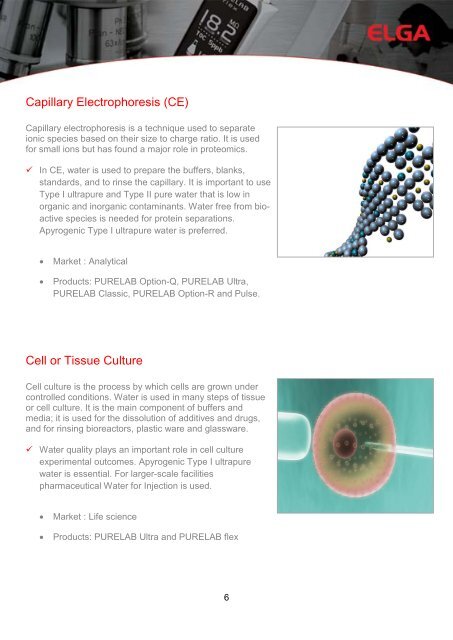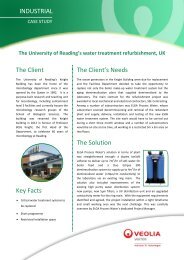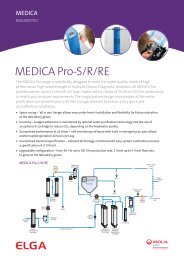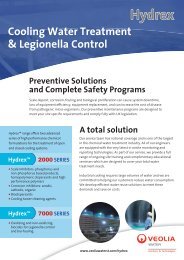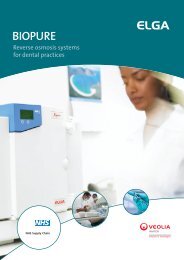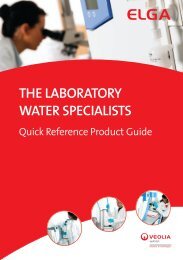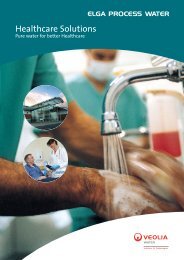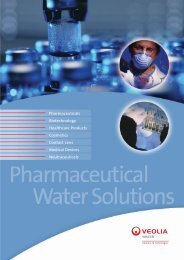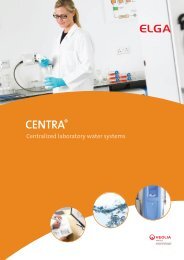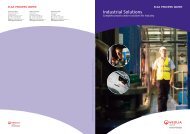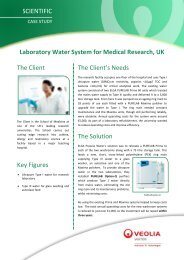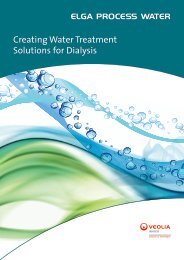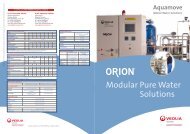Application Quick Reference Guide
Application Quick Reference Guide
Application Quick Reference Guide
Create successful ePaper yourself
Turn your PDF publications into a flip-book with our unique Google optimized e-Paper software.
Capillary Electrophoresis (CE)<br />
Capillary electrophoresis is a technique used to separate<br />
ionic species based on their size to charge ratio. It is used<br />
for small ions but has found a major role in proteomics.<br />
In CE, water is used to prepare the buffers, blanks,<br />
standards, and to rinse the capillary. It is important to use<br />
Type I ultrapure and Type II pure water that is low in<br />
organic and inorganic contaminants. Water free from bioactive<br />
species is needed for protein separations.<br />
Apyrogenic Type I ultrapure water is preferred.<br />
• Market : Analytical<br />
• Products: PURELAB Option-Q, PURELAB Ultra,<br />
PURELAB Classic, PURELAB Option-R and Pulse.<br />
Cell or Tissue Culture<br />
Cell culture is the process by which cells are grown under<br />
controlled conditions. Water is used in many steps of tissue<br />
or cell culture. It is the main component of buffers and<br />
media; it is used for the dissolution of additives and drugs,<br />
and for rinsing bioreactors, plastic ware and glassware.<br />
Water quality plays an important role in cell culture<br />
experimental outcomes. Apyrogenic Type I ultrapure<br />
water is essential. For larger-scale facilities<br />
pharmaceutical Water for Injection is used.<br />
• Market : Life science<br />
• Products: PURELAB Ultra and PURELAB flex<br />
6


